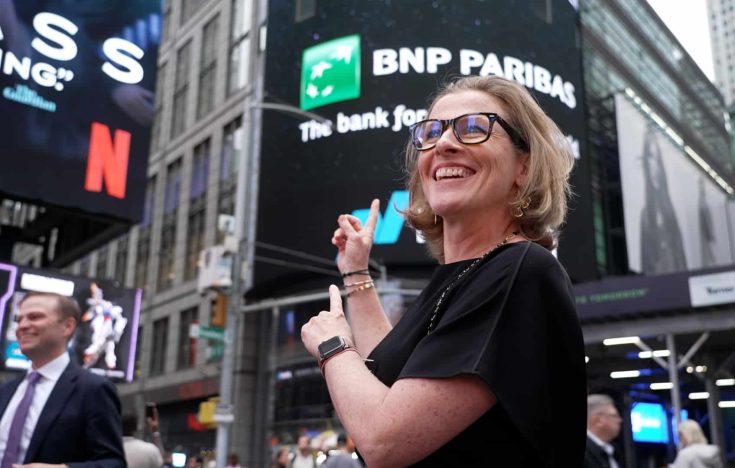For its annual “Delivering the World” flagship client event held this year on June 9 at New York’s Nasdaq headquarters, BNP Paribas Securities Services offered a comprehensive look at macroeconomic trends, as well as the essential investments in market infrastructure, to better handle increased complexity and seize opportunities around clearing, digital and data flows.
Here are some of the main takeaways from the conference.
Macro trends
On the topic of tariffs, Isabelle Mateos y Lago, Chief Economist for BNP Paribas, told moderator Pippa Stevens of CNBC Markets that the current U.S. administration has impacted the rules of economic order in ways faster than anyone anticipated. “While the administration’s protectionist agenda was not a surprise, it was the speed and scale of the tariff rollouts that has certainly defied what people expected,” remarked Mateos y Lago.
While the U.S. economy continues to show resilience, ongoing uncertainty around trade policy has created headwinds. At the same time, Mateos y Lago pointed to growing momentum in other regions, particularly in Europe, where strengthened trade alliances and greater policy cohesion are presenting fresh opportunities for long-term growth.
“Even with growth forecasts revised downward, we shouldn’t underestimate the continued resilience and innovation of the U.S. economy, which still has momentum on its side,” she said.
Eye on infrastructure
The second segment of the event, moderated by Philippe Benoit, BNP Paribas’ Head of Strategic Business, Development & Transformation, explored how the industry is navigating today’s shifting market dynamics and emerging sources of complexity. The panel featured Frank La Salla, CEO of DTCC, Roberto Gonzalez, CEO of S.D. Indeval, and Tal Cohen, President of Nasdaq.
The discussion highlighted how today’s market environment is considered one of the most dynamic in recent years, driven not only by risk and regulatory developments, but also by the acceleration of technologies such as AI, blockchain and advanced data systems. With recent turbulence in equities, the sharp increase in trade and liquidity volumes has prompted the industry to place renewed focus on resiliency. Many firms have found that recent modernization efforts have enabled them to handle surging transaction volumes more effectively, especially under the shortened U.S. T+1 settlement cycle which has also delivered tangible operational and capital benefits.
The panel also reflected on the success of last year’s T+1 adoption, including by S.D. Indeval, Mexico’s central securities depository, which brought the country’s settlement framework in line with North America peers. The transition to T+1 in North America exceeded expectations, yielding lower costs and higher efficiency, while initial concerns about increased fail rates – particularly given the prevalence of off-exchange trading – proved largely unfounded. Whilst lessons were shared for other regions contemplating the T+1 move, the uniqueness & impetus of the U.S. context were also highlighted.
Throughout the conversation, panelists emphasized that the key to successful modernization and introduction of digital lies in balancing innovation with continuity. Clients need to know they can build on the infrastructure they’ve already invested in, while regulators and stakeholders require clear communication around the benefits – whether that’s improved performance, reduced risk or increased resilience.
The consensus: the industry is well-positioned to embrace what comes next, from further T+1 enhancements to the broader technological transformations ahead.
